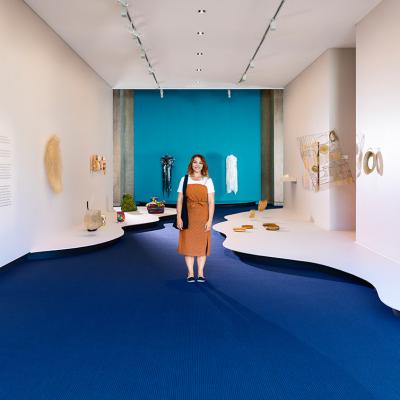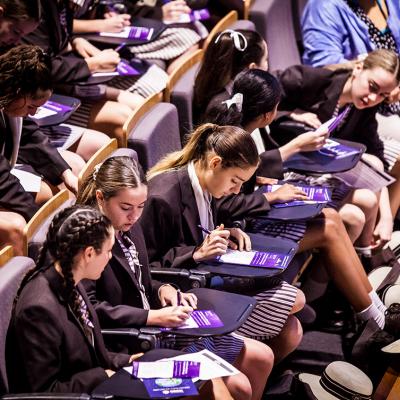If your teen is in Year 10, you’ve likely heard the term ‘SET plan’ thrown around already. It’s an important process that helps with choosing senior high school subjects and planning for the future.
You may be wondering what your role as parent or guardian is in all this. Or why your teen is being asked to consider their career options at the spritely age of 16. Let’s take a closer look at the details – why creating a SET plan is important, the impact it has upon getting into university, and how it can set your teen up for success in the future.
What is a SET plan?
SET stands for Senior Education and Training. The purpose of a SET plan is to figure out what senior subjects your teen wants to take in Years 11 and 12, based on their interests and their career and higher education goals.
SET plans are created in Year 10 and are a great point of reference to help your teen focus their studies in senior school. They map out a learning pathway that will assist your teen in getting where they want to go after high school, whether that’s into an apprenticeship or trade, straight into the workforce, or onto higher education.
While SET plans are finalised by the end of Year 10, they aren’t set in stone. If your teen changes their mind in the following years about what they want to do or the type of career or studies they want to pursue after high school, they can revise their SET plan.

UQ’s Women in Engineering Explore Day helps young women consider whether further education in this field is something they want to pursue after high school.
Why should my teen create a SET plan?
SET planning gets your teen thinking about their future after high school. It’s an important step in goal setting and can inspire them to explore their career options.
While SET planning is important for all teens, regardless of whether they want to undertake further education after high school, it can be particularly important for those aiming to get into university. A SET plan will help put them on a path to fulfil the requirements needed to get an ATAR, a key criterion for straightforward entry into university (though it is possible to get into university without an ATAR).
During the SET planning process, students will also investigate university degrees they may be interested in studying. Some students may know the type of career they want and realise they need a university qualification to break into their chosen field. In these instances, there may be senior subjects they’re required to take in Years 11 and 12 to be eligible to gain entry into their preferred degree. These are called subject prerequisites and are put in place to ensure your teen enters their degree with the knowledge they need to succeed.
Take Blair, for example. She knows she wants to be an electrical engineer, so she looks into studying a Bachelor of Engineering (Honours) at UQ. To get into this degree, Blair needs to aim for an ATAR of 84 and is required to take General English, Mathematical Methods, and one of either Chemistry or Physics in Years 11 and 12. She needs to achieve at least a grade C or higher in these subjects. Blair discusses these prerequisites with her teacher to ensure her SET plan puts her on track to achieve these goals.
This is just one example of how a SET plan can help your teen get where they want to be. Read the Queensland Government’s resource ‘Different pathways for different young people’ to discover how other teens may use a SET plan to work towards their future.
Long story short: your teen’s SET plan can help them get into university.

UQ’s InspireU camps offer opportunities for Aboriginal and Torres Strait Islander high school students to explore their higher education options.
Stages of a SET plan
So, what exactly is involved in a SET plan? It consists of roughly 4 stages.
1. Thinking about the future
Teens start considering what they’re interested in and what they excel at. With encouragement from their teachers and yourself, they start thinking about how they can transform their interests into a career.
2. Exploring options
Students explore how they will achieve their goals – what training will they need to undertake to get where they want to be? What senior subjects do they need to take to prepare them for their future career? They may start comparing tertiary education institutions, particular qualifications and the paths they can take to get them.
3. Documenting a plan
This is the part where everything’s jotted down on paper (well, digitally). At this stage, your teen will document the senior subjects they want to take and record their action plan for Years 11 and 12. This doesn’t have to include settling on a specific career. They may generate a plan in conjunction with their teachers that allows them to keep their options open. For example, they may choose to take a mixture of VET and ATAR eligible subjects, so they can pursue university after high school if they wish, or have the skills necessary to launch straight into work.
4. Implementing and reviewing the plan
Lastly, your teen will put the plan into action as they move into Year 11. Encourage them to review their plan and ensure they’re comfortable with how it’s tracking. They may decide to make changes to their SET plan if their circumstances change or they discover a new area of interest. Be sure to discuss these changes with your teen’s teachers to ensure they receive support and advice on their new direction.
A parent or guardian’s role during SET planning
Your key role in the SET planning process will be to provide support and encouragement. You may need to give your teen gentle pushes to urge them to explore their options and think about what interests them most.
Talking to your teen about their future can be challenging. A lot of high schoolers don’t know what they want to do as a career, and the prospect of settling on a plan to get there can be daunting. But there are questions you can ask them to prompt ideas for their future, without getting too scary and specific.
Try to find a balance so you’re showing encouragement without being overbearing. It’s their future, after all. Assure your teen that their SET plan isn’t set in stone – plans can change as they change. The important thing is to explore their options, seize opportunities, reassess when required, and have a goal to work towards.
Is your teen still on the fence about whether they want to qualify for an ATAR? Discover the difference between an ATAR and the Queensland Certificate of Education (QCE), and where each can take them.





